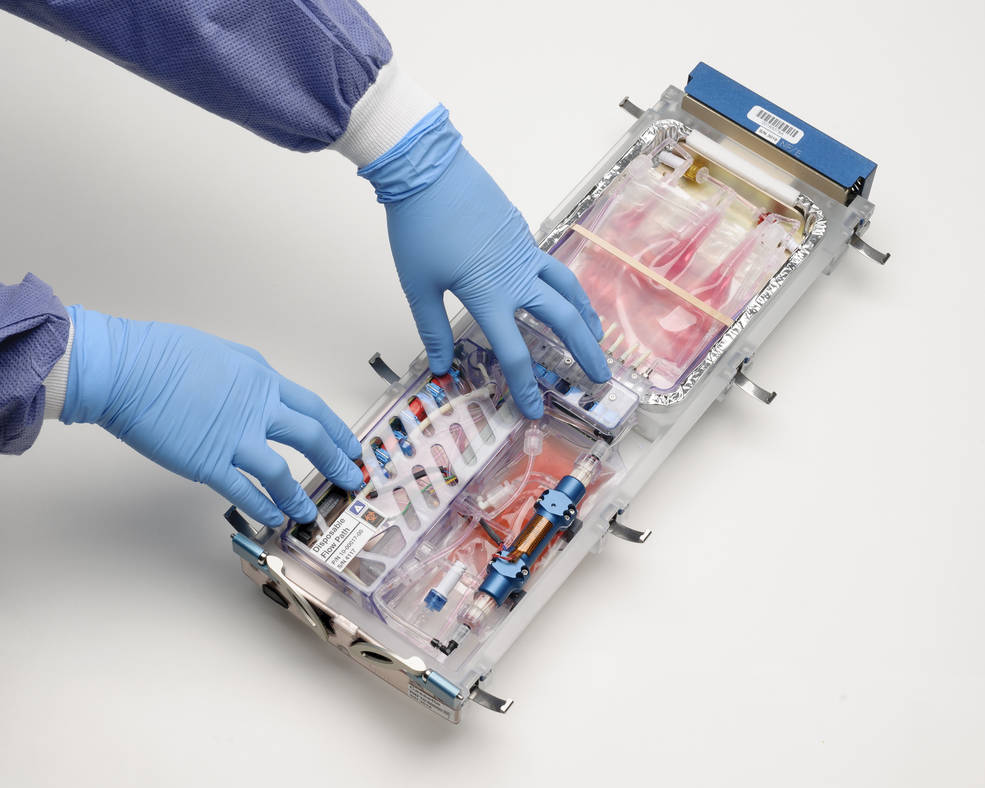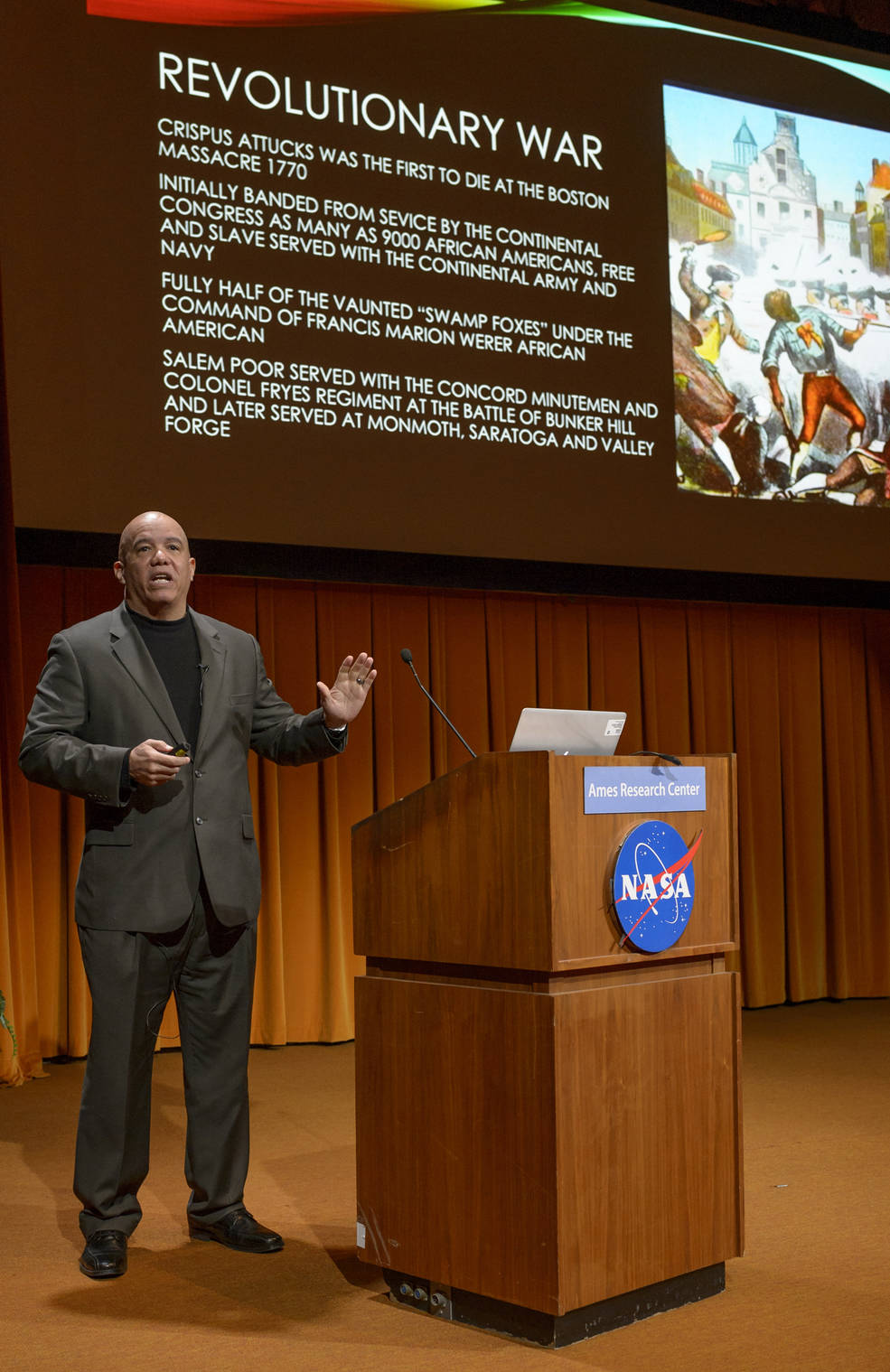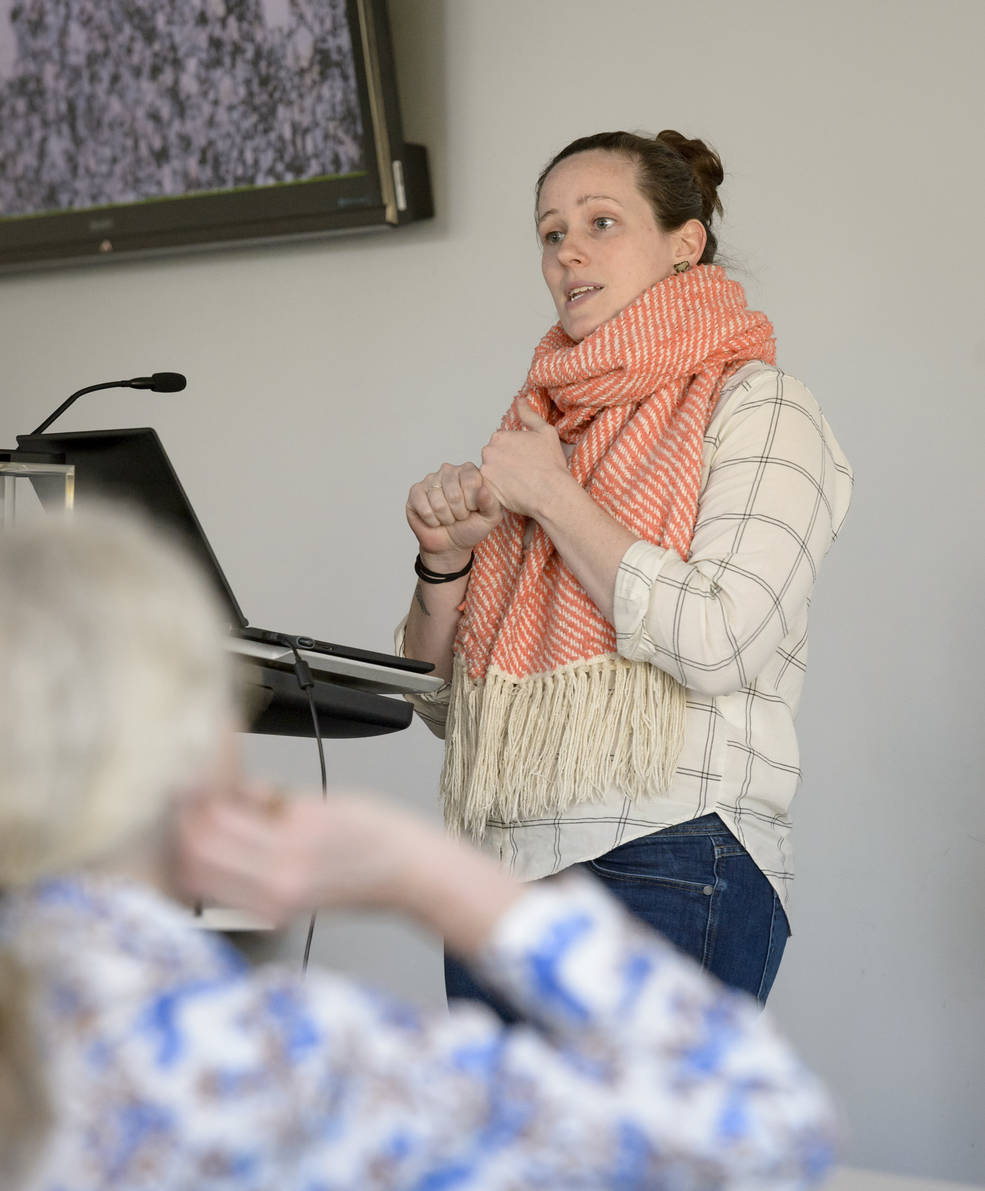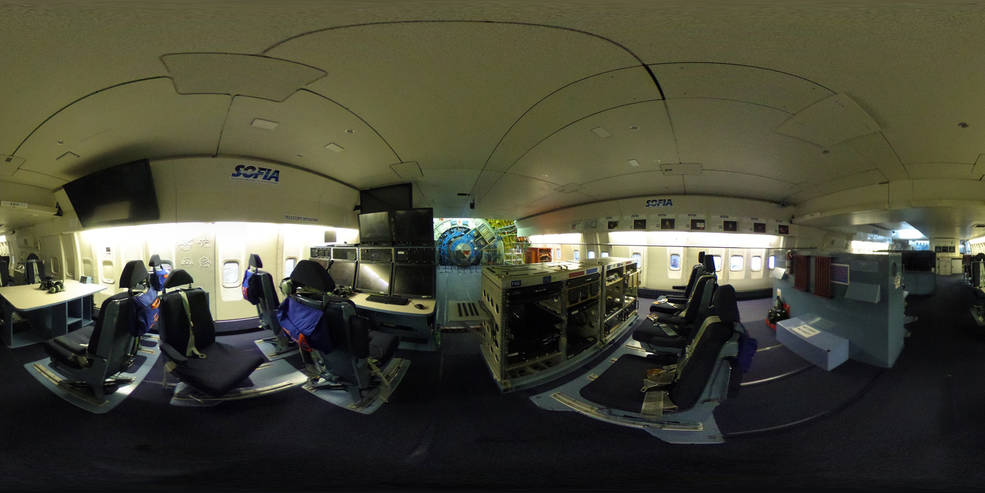Fiscal Year 2019 Budget Rollout Discussed at All Hands

Chief of Staff Karen Bradford Inducted into Black Legends Hall of Fame

ARADS – Driving, Drilling and Detecting Life in Chile’s Mars-like Desert
by Abigail Tabor
How would you search for signs of life – traces of tiny, living microbes or their fossilized remains – in an extreme and distant environment? NASA scientists and engineers are working on an answer to that question, aiming to find out if life ever evolved on the planet Mars and if it still harbors life today.
A project called the Atacama Rover Astrobiology Drilling Studies, or ARADS, has been designing tools and techniques for future exploration and testing them in one of the most Mars-like places on Earth: Chile’s Atacama Desert.
Each year from 2016 to 2019, the ARADS team, led by Brian Glass of NASA Ames, spends one month working in the heart of the Atacama (photo above). This alien landscape is among the driest places on Earth; it can rain as little as one centimeter, or less than half an inch, per decade here. Despite being considerably warmer than Mars, the region is remarkably similar to the Red Planet today, due to its extreme dryness and soil chemistry.
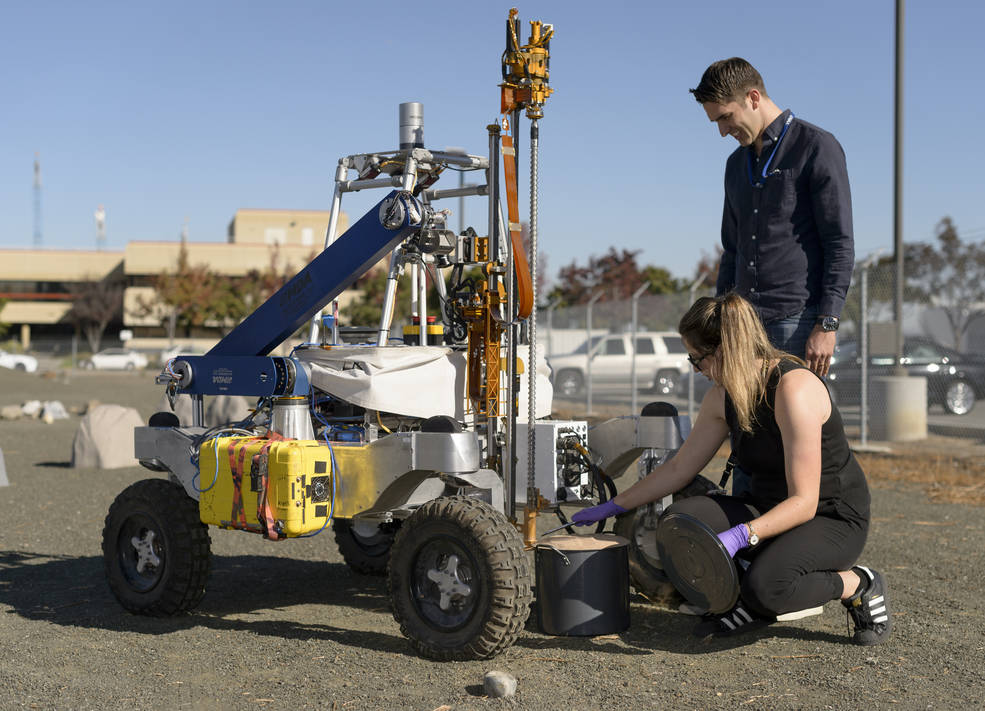
For full feature story, see: ARADS
Cell Science – Studying How Life Changes in Space
by Abigail Tabor
Some aspects of life function differently in space, and biologists can learn a lot about how it impacts human health by studying cells grown in the microgravity environment, or weightlessness, of the International Space Station. The Bioculture System, developed at NASA’s Ames Research Center in Silicon Valley, is a new research facility for the orbiting laboratory that will let scientists carry out long-term cell biology studies, on a broad range of subjects and diverse cell and tissue types. This new cell and tissue culture hardware now allows for real-time, remote monitoring of cell cultures, and finer control over the conditions in which they grow.
For full feature story, see CellScience
Innovating Employees Recognized at Tech Transfer Awards Ceremony
The awardees have worked hard to develop new technologies that bring honor and recognition to NASA and Ames and help fuel agency missions and projects that enhance the quality of life here on Earth. Their commitment to inspired innovation is fundamental to our success and to maintaining Ames’ leadership role within NASA in technology development and transfer.
Congratulations to these very deserving innovators. Each should feel an enormous sense of pride and accomplishment for their forward thinking, vision, creativity and hard work.
A list of those being honored follows:
AMES TECHNOLOGY TRANSFER AWARDS
2017 – NASA Software of the Year Award Terminal Sequencing and Spacing (TSAS) Software for Air Traffic Control John E. Robinson, Harry N. Swenson, Xiao Liang Chen, Thomas Prevot, Chu Han Lee, Todd J. Callantine, Steven H. Chan, Hai Ou-Yang, Joseph R. Cisek, Alan G. Lee, Leonard N. Bagasol, Everett A. Palmer
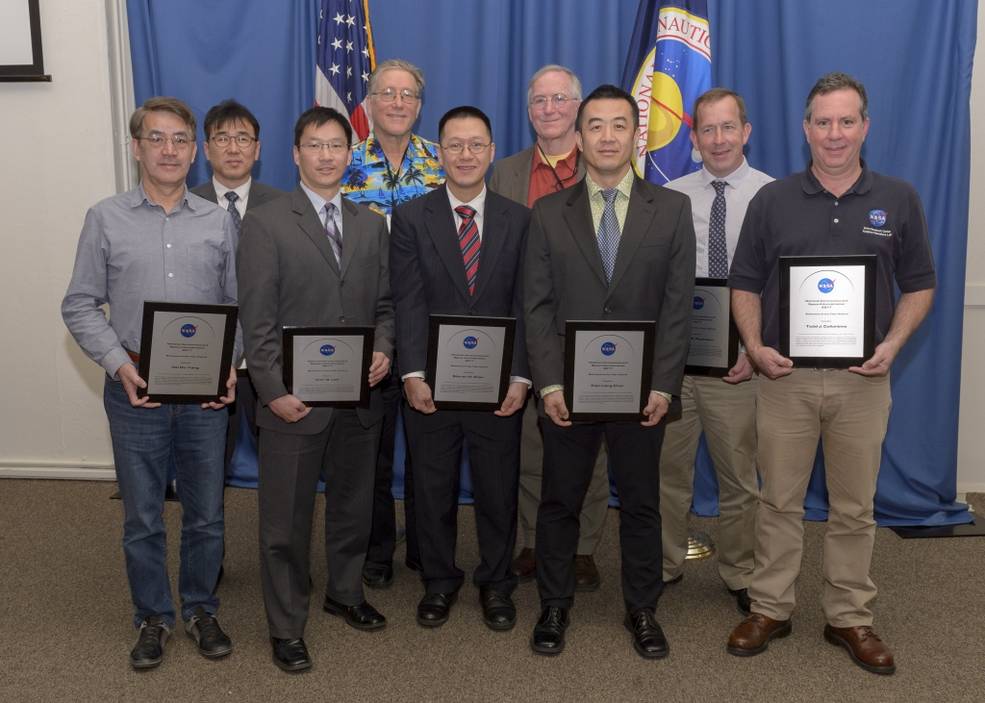
Honorable Mention – 2017 NASA Invention of the Year Competition: Co-Optimization of Bluntbody Re-entry Analysis (COBRA) for Moving Vehicles James L. Brown, Joseph A. Garcia, David J. Kinney, Jeffrey V. Bowles, Nagi N. Mansour, Loc C. Huynh, Xun J. Jiang, Eric Lau
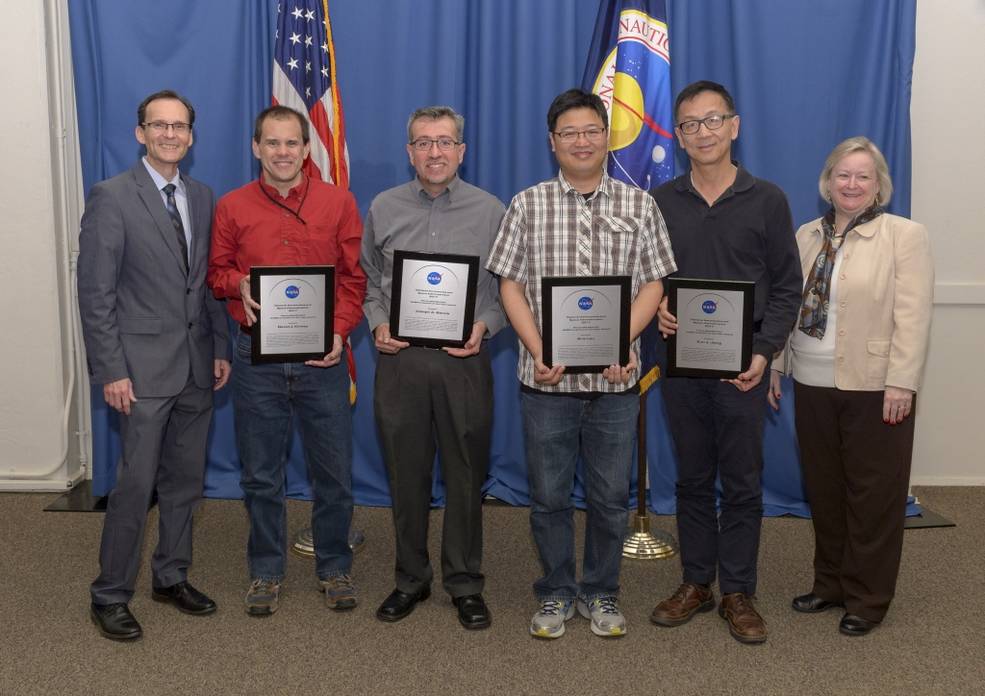
2017 Issued Patents:
Method and System for Air Traffic Rerouting for Airspace Constraint Resolution: Alexis Clymer, Heinz Erzberger, David McNally, Alexander Morando, Kapil Sheth, Fu-tai Shih
Reconfigurable Image Generator: John Archdeacon, Nelson Iwai, Kenji Kato, Barbara Sweet
Flexible Ablators; Melmoth Covington, Ehson Ghandehari, Margaret Stackpoole
Predicted Weather Display and Decision Support Interface for Flight Deck: Walter Johnson, Robert Koteskey, Dominic Wong, Shu-Chieh Wu
Thermal Protection Supplement for Reducing Interface Thermal Mismatch: Daniel Leiser, David Stewart
Waterwalls for Life Support: Marc Cohen, Michael Flynn, Sherwin Gormly, Mona Hammoudeh, Tra-My Justine Richardson
Comprehensive Oculomotor Behavioral Response Assessment (COBRA): Dorion Liston, Leland Stone
Aeroelastic Wing Shaping Using Distributed Propulsion: Nhan Nguyen, Kevin Reynolds, Eric Ting
Biocompatible Capsules and Methods of Making: David Loftus
Space Optical Communications Using Laser Beams: Peter Goorjian
System for Performing Single Query Searches of Heterogeneous and Dispersed Databases: David Maluf, Mohana Gurram, Chris Knight, Takeshi Okimura, Vu Tran, Anh Trinh
Portable Medical Diagnosis Instrument: David Loftus, Cristina Davis, Anup Singh, Matthew Coleman, Jing Li, Tore Straume
“African Americans in Times of War,” by Motivational Speaker Mike Washington
The African American Advisory Group and the Office of Diversity and Equal Opportunity hosted retired Master Sergeant Michael Washington as the keynote speaker on Feb. 27, 2018, at Ames in observance of Black History Month, presenting the talk, “African Americans in Times of War.” Washington is one of the nation’s most highly sought inspirational and motivational speakers.
In 2017, Washington was designated an “Upstander” award winner by Starbucks coffee company, and his accomplishments in the field of first responder were chronicled with a short film, podcast and story on the company’s website and in Starbuck’s stores nationwide. Washington currently is assigned to Engine Company 27 in Georgetown. He has been a firefighter for 27 years, 22 in Seattle and five in North San Diego Co. (Fallbrook). He also is the Washington State fire service representative at the Washington State Fusion Center. As a retired Marine Corps master sergeant, Washington served 23 years (seven active and 16 reserve), seeing combat with the 2nd Light Armored Infantry Battalion, 2nd Marine Division during Operation Desert Storm. He served as a counterintelligence agent with combat deployments to Bosnia, Iraq, Afghanistan and Africa. He is a member of Team Rubicon, an internationally recognized veteran’s volunteer disaster relief organization with more than 50,000 members or “Grey Shirts.” In this capacity, he was deployed to Haiti, New York/New Jersey for Hurricane Sandy, EF5 tornado in Moore, Oklahoma, Illinois and Houston for flood and tornado relief, and Pateros, Washington for wild fires serving as the incident commander, operations and division chief and supervisor and pick and shovel man. Team Rubicon was founded by a Marine Corps friend of his son. Washington’s involvement in Team Rubicon honors his son Sgt. Michael T. Washington who was killed in action while serving with 2nd Bn. 7th Marines in Afghanistan in 2008. Washington was honored by Team Rubicon as “Veteran of the Year 2014.”
Sikh Captain America Brings the Battle Against Stereotypes to Ames
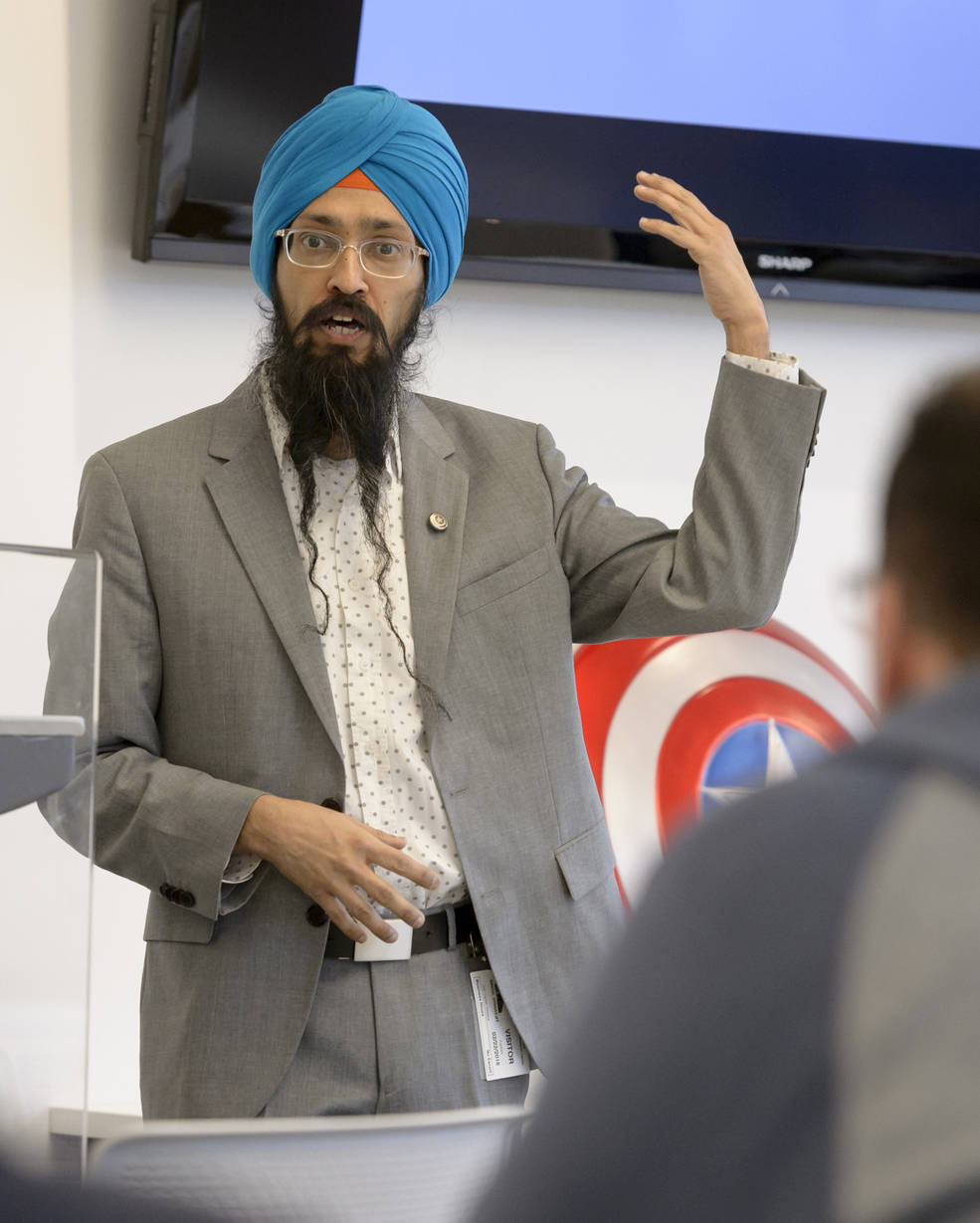
Maggie McAdam Discusses Infrared Studies of Asteroids and Meteorites
Meteorites and asteroids preserve information about the early solar system including accretion processes and parent body processes active on asteroids at these early times. One process of interest is aqueous alteration. This is the chemical reaction between coaccreted water and silicates producing hydrated minerals. Some carbonaceous chondrites have experienced extensive interactions with water through this process. Since these meteorites and their parent bodies formed close to the beginning of the solar system, these asteroids and meteorites may provide clues to the distribution, abundance and timing of water in the solar nebula at these times.
Using samples of meteorites with known bulk properties, it is possible to directly connect changes in mineralogy caused by aqueous alteration with spectral features. Spectral features in the mid-infrared are found to change continuously with increasing amount of hydrated minerals or degree of alteration. Building on this result, the degrees of alteration of asteroids are estimated in a survey of new asteroid data obtained from SOFIA and IRTF as well as archived the Spitzer Space Telescope data. Asteroids with hydrated minerals are found throughout the main belt indicating that significant ice must have been present in the disk at the time of carbonaceous asteroid accretion.
Finally, some carbonaceous chondrite meteorites preserve amorphous iron-bearing materials that formed through disequilibrium condensation in the disk. These materials are readily destroyed in parent body processes so their presence indicates the meteorite/asteroid has undergone minimal parent body processes since the time of accretion.
Deamer: “Hydrothermal Vents or Hydrothermal Fields: Where Can Life Begin?”
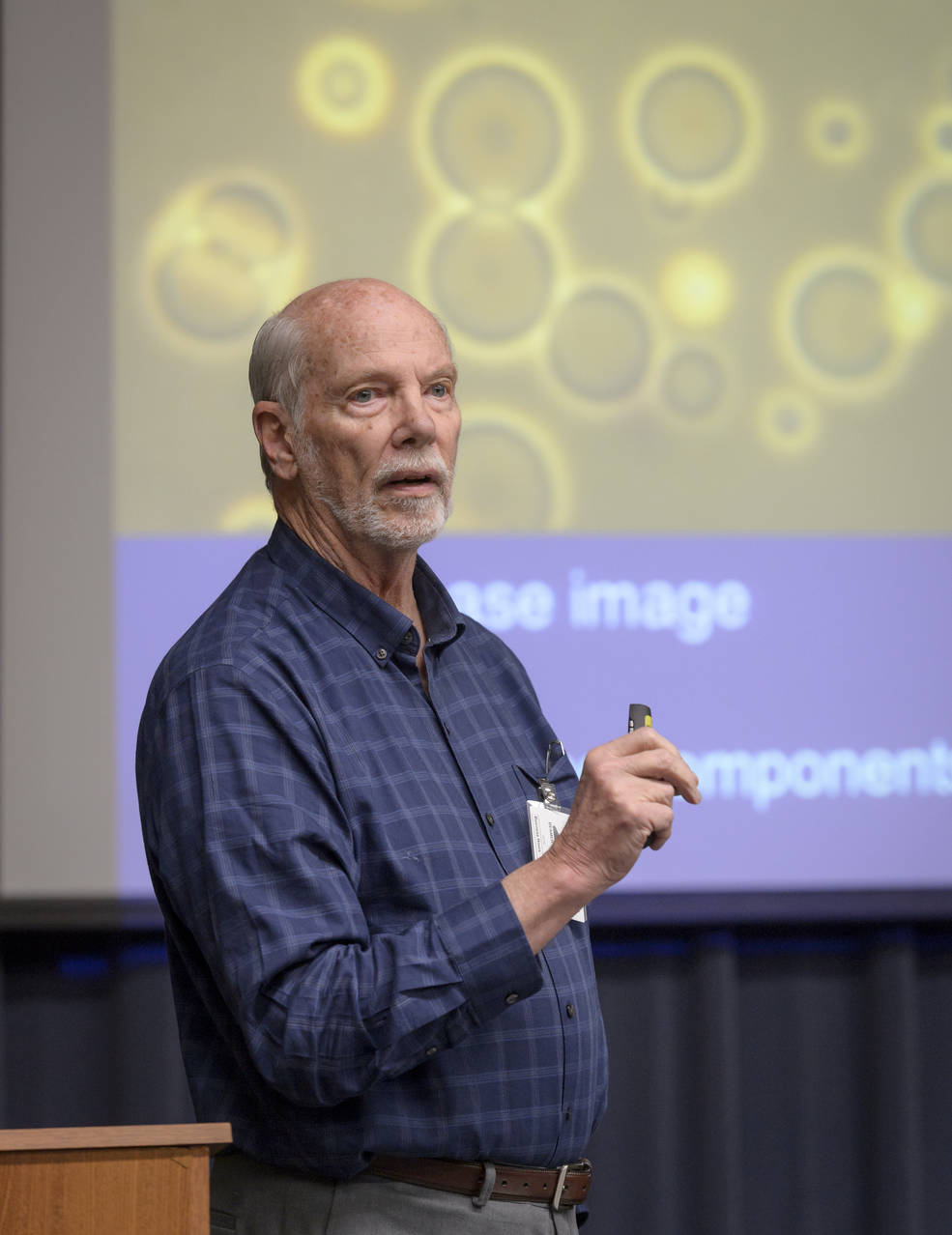
45 Years Ago, Pioneer 10 Became the First Spacecraft to Pass Through the Asteroid Belt
by Danielle Carpenter

For additional information about NASA’s Pioneer Missions, visit: https://www.nasa.gov/centers/ames/missions/archive/pioneer.html
Next Stop: The Stratosphere via Virtual Tour
by Nicholas Veronico
Now it’s possible to explore NASA’s flying observatory with a new 3-D virtual tour that brings users aboard SOFIA, the Stratospheric Observatory for Infrared Astronomy.
SOFIA is a Boeing 747SP aircraft modified to carry a 100-inch diameter telescope to 38,000-45,000 feet. The tour enables users to view the exterior of the aircraft, and see the one-of-a-kind door covering the telescope cavity, which is opened in flight. Inside the aircraft’s main deck, visitors can explore the flying mission control center, where telescope operators, scientists and mission directors control the telescope and conduct observations while flying in the stratosphere. The tour continues upstairs to the aircraft’s flight deck, where the pilots and flight engineers carefully fly the plane so that the telescope is in the right place at the right time.
For full story feature, see: StratosphereTour
Imaging the Surfaces of Stars Discussed

In Memoriam …
Former Project and Mission Operations Manager for IRIS James Strong Dies
It is with profound sadness that the Ames family has learned of the sudden passing of James (Jim) Strong on Jan. 28, 2018. A long-time Ames employee of nearly 39 years, Jim touched the lives of many across the Center during the course of his remarkable life and career.
While Jim was an accomplished photographer, he was incredible at his job at Ames. Recently, Jim was the Project and Mission Operations Manager for the IRIS (Interface Region Imaging Spectrograph) explorer mission, which observes the transition region of our Sun in multiple ultraviolet wavelengths. Prior to his work on IRIS, Jim was a longtime fixture in the Ames wind tunnels. He specialized in space shuttle insulation tile aerodynamic testing and worked on approximately 50 wind tunnel tests in nearly every wind tunnel at NASA Ames as a test engineer or test manager. These critical test campaigns included space shuttle aero-acoustics of shuttle launch configurations, Global Hawk and supersonic testing of the Mars Science Lab parachute. Jim also served as the re-activation manager for the NASA Ames 9-foot-by-7-foot Supersonic Wind Tunnel in 2001, which as part of Ames Unitary Plan Wind Tunnels remains one of NASA’s most utilized major tunnels.
Later, Jim transitioned from aeronautics testing to a spacecraft operations role by becoming a flight controller for the Lunar Crater Observation and Sensing Satellite (LCROSS) mission in 2007.
A Celebration of Life Remembrance will be held for Jim on March 7, 2018, from 2:00 – 4:00 p.m., at Ames in the Syvertson Auditorium, N201.
Jim’s family has asked that in lieu of flowers, donations may be made to the donor’s charity of choice in Jim’s name.





























